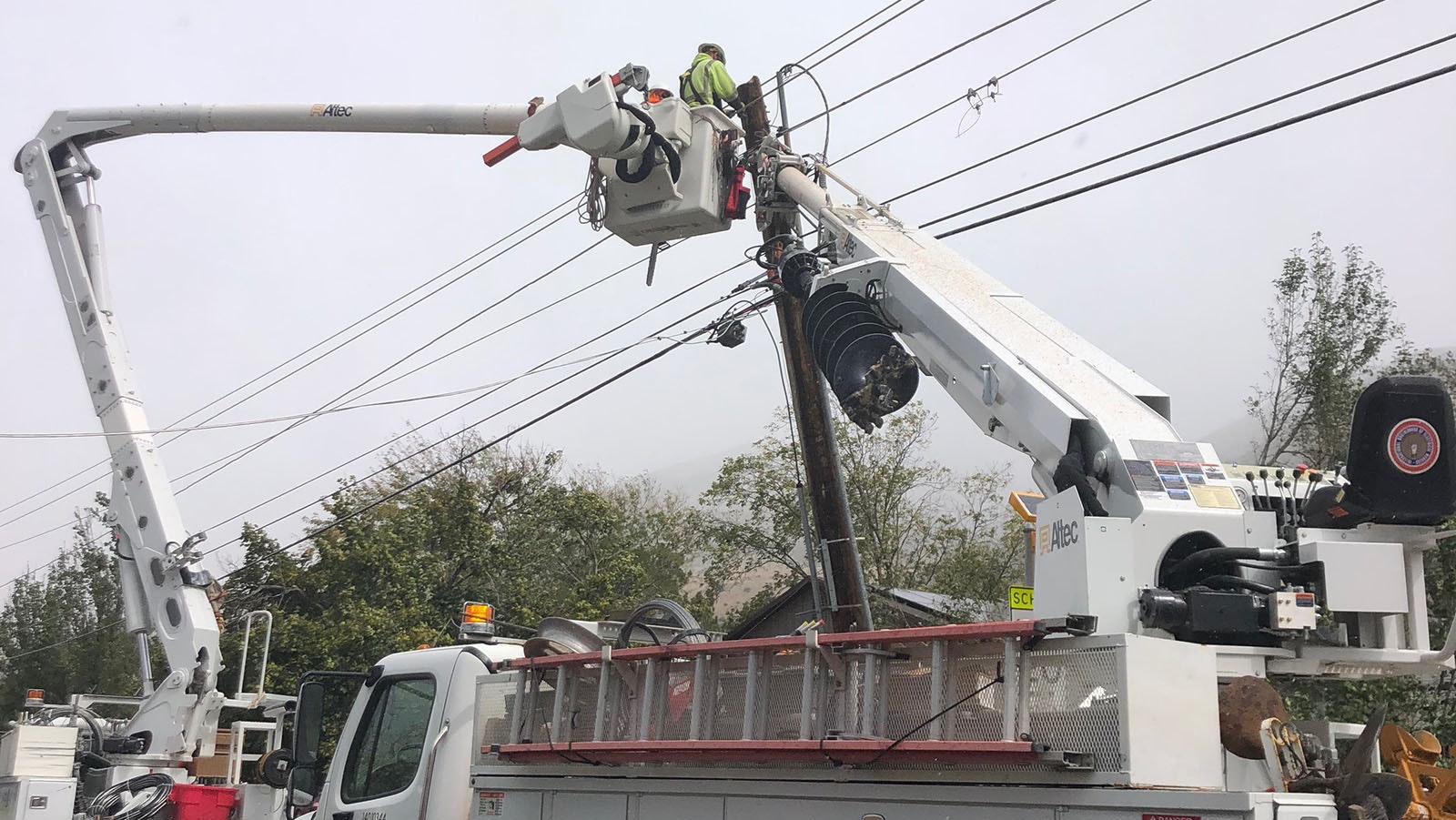Rocky Mountain Power is requesting a 14.7% increase in power bills for its 144,500 customers in Wyoming, the utility announced Friday.
The request, if approved by the Wyoming Public Service Commission (PSC), would raise $123.5 million to help Rocky Mountain Power (RMP) pay for capital investments in new high-voltage transmission lines, a new Laramie area wind farm getting energized in 2025 and power plants.
For the typical residential customer using 700 kilowatt-hours of electricity per month, the increase would be $17.17 per month, the utility said in a statement.
PacifiCorp spokesman David Eckelsen said that the requested increase will be reviewed by the PSC and other intervening parties over a period of 10 months, with rates to become effective June 1, 2025.
“We recognize the impact that the rising costs of providing electric service has on customers,” said RMP President Dick Garlish, in a statement. “The dynamic economic conditions we face are similar to those challenging all other electric providers in the nation.”
Garlish said that his utility is working to control expenses and investment costs.
“We work hard to control the costs within our control, and the company’s prudent actions historically are demonstrated by the fact that we have been consistently among the lowest-cost electric utilities in the U.S,” he said. “We believe we can maintain this position because these cost pressures are affecting the entire electric utility industry.”
Another One
This latest request for a hike in power bills follows another one that just went into effect a few weeks ago on July 1.
In that matter, bills rose after RMP raised monthly power bills by 12.3%, or about $139.4 million for residential, commercial and industrial customers.
This increase was due to a standard energy cost adjustment that customers began paying last month.
On average, residential customers saw their monthly bills rise 9.3%, or about $12 per month on their utility bills with that bump.
RMP, which is owned by the Berkshire Hathaway-backed PacifiCorp based in Portland, Oregon, calculates the standard energy costs adjustments as part of utility’s annual true-up of fuel costs.
These true-ups are based on a complicated formula involving what the company pays for fuel to burn in power plants, and what they are permitted by regulators to charge customers. The fuel prices fluctuate on an annual basis, which is why utility bills can rise or fall.
The rate hike was blamed on coal and fuel supply chain disruptions.
Higher Bills
The general rate increase announced Friday comes on the heels of a controversial rate case last year where RMP wanted to boost everyone’s power bills by nearly 30%.
Through intense negotiations between the PSC and RMP, and angry public hearings throughout the state, the rate increase was lowered to 8.3%, giving RMP $53.9 million.
The 8.3% increase last year, which went into effect at the beginning of 2024, came in a general rate case, which happens every few years.
The capital investments in transmission and generation infrastructure account for nearly half of the rate request filed Friday. The 14.7% proposal is Wyoming’s share for these investments based on Wyoming’s use of Rocky Mountain Power’s system, the utility said.
Some of these investments include construction of the Rock Creek wind project located 25 miles north of Laramie between Rock River and Interstate 80, and the multibillion-dollar Gateway South and Gateway West high-voltage transmission projects that link Wyoming and neighboring states in Utah, Oregon and elsewhere.
The transmission lines go into effect later this year, and next year Rock River will go into service.
Insurance Costs Up 1,888%
Rocky Mountain Power also cited increasing costs for commercial excess liability insurance are far beyond anything the company has experienced before. Excess liability insurance costs were up 270% in one year, and the 2023-24 policy year represents a 1,888% increase over the last five years.
The insurance is associated with wildfires throughout the U.S. West and PacifiCorp’s exposure to these kinds of liabilities.
Last month, PacifiCorp agreed to a $150 million settlement of claims related to 2020 wildfires that devastated parts of Oregon and California.
A portion of these investments in Rock Creek and Gateway high-voltage lines were approved by the PSC in the 2023 general rate request.
The new request also includes Wyoming’s share of the Rock Creek II wind project, which will go into service in September 2025. Together, these investments amount to $52.7 million of the total $123.5 million increase proposed for retail rates.
The rate request filed Friday reflects two rate mitigation proposals to ease the impact on customers, the utility said.
The rate mitigation proposals are intended to recognize the significant rate pressures affecting customers and balance the impact on customers with the need for the company to recover the prudent investments it must make to continue providing safe, reliable service.
The first proposal is to hold power costs at the same level as in current rates, as set by the commission in the 2023 general rate case. These costs are the costs of coal and natural gas for thermal power plants and costs of power purchased on the wholesale market in the interests of customers, with any revenue from wholesale sales later credited to customers.
The second mitigation proposal is for a modest increase to the company’s allowed rate of return from 7.13% to 7.45%. This increase is driven by higher costs to borrow money, which the company needs to fund its operations.
Wyoming customers pay only for their proportional use of this system, 13.8% of the total cost, according to a formula agreed to by state public utility commissions, including Wyoming.
Pat Maio can be reached at pat@cowboystatedaily.com.





